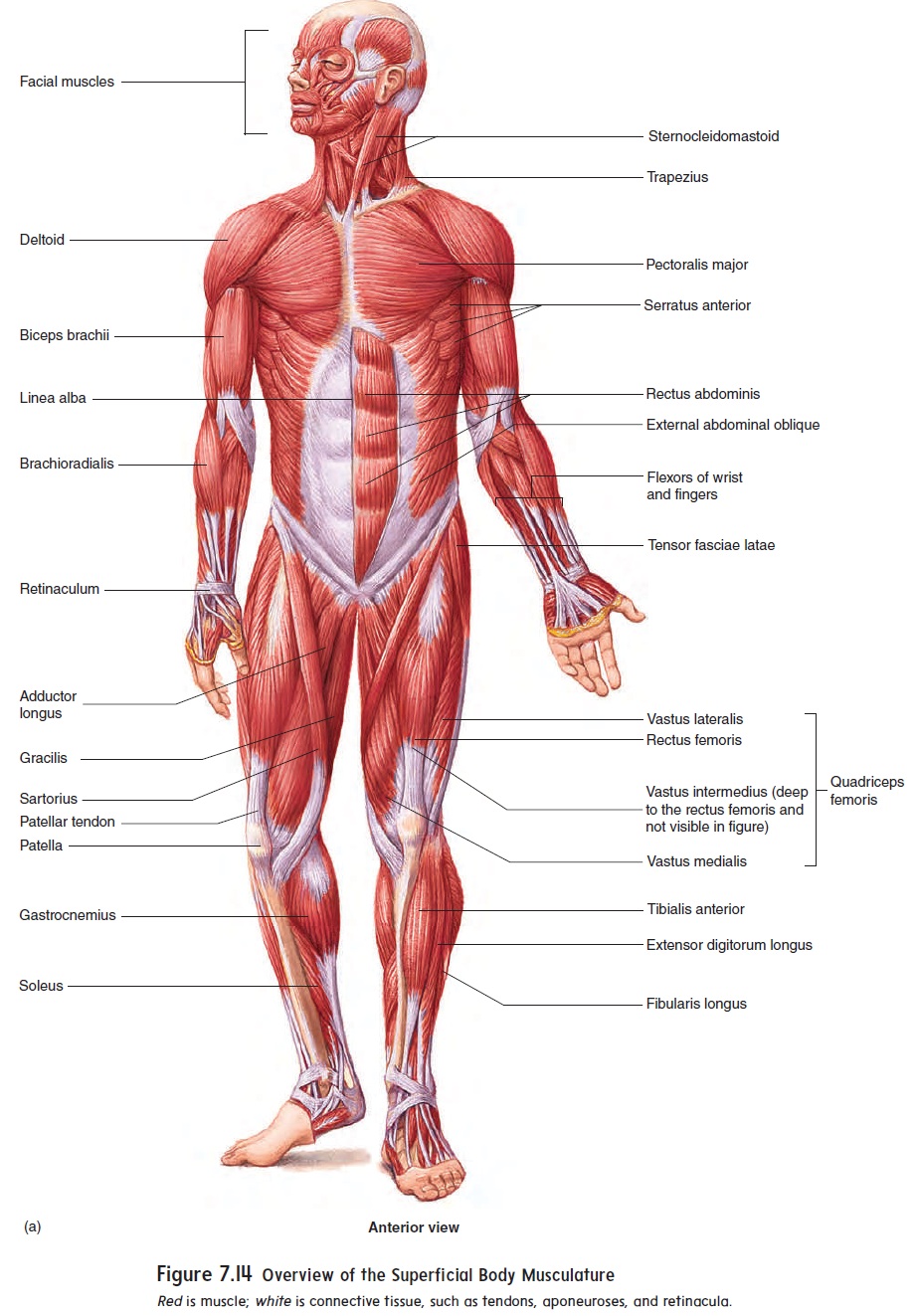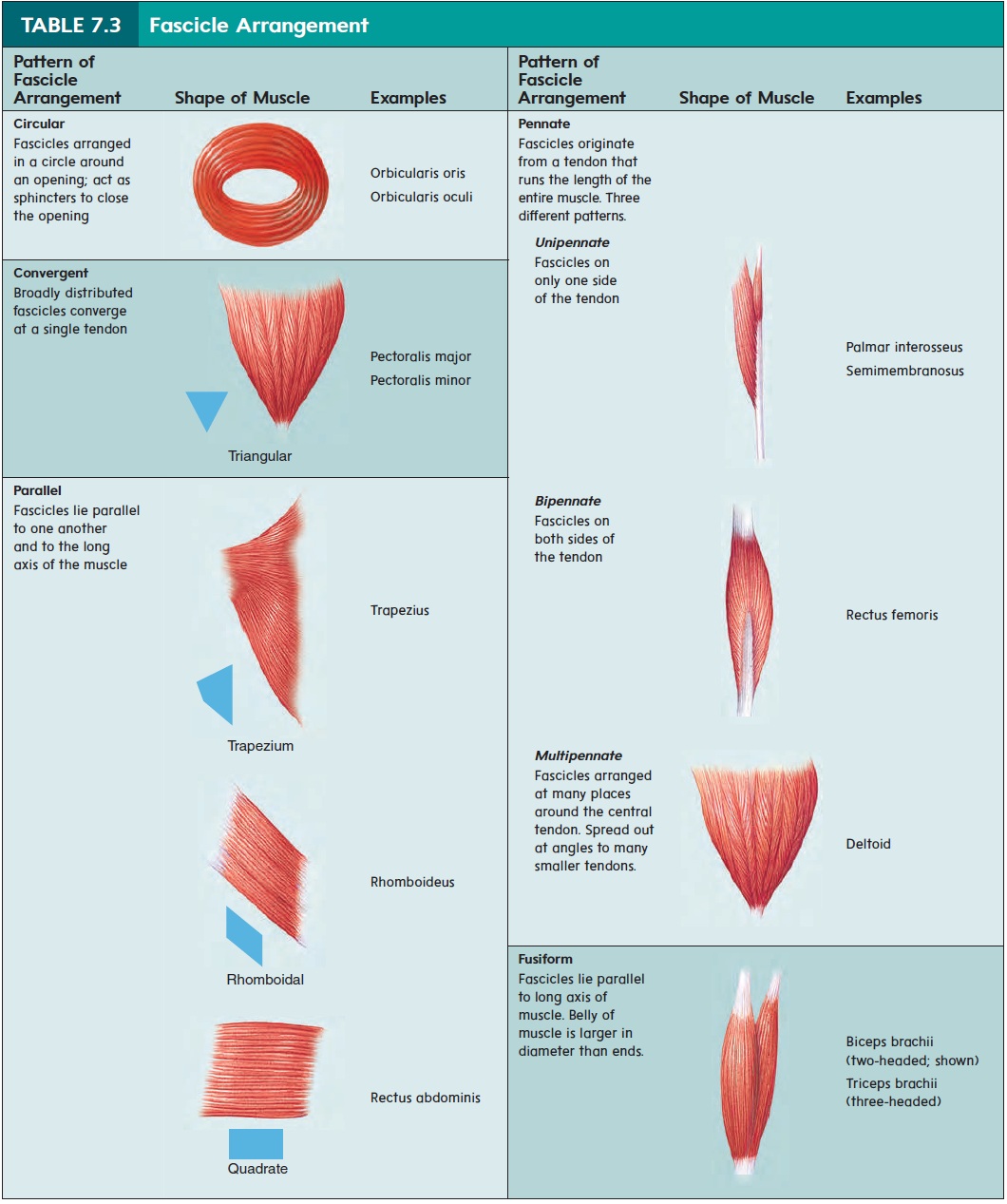Chapter: Essentials of Anatomy and Physiology: Muscular System
Nomenclature - Skeletal Muscle Anatomy
Nomenclature
Most muscles have descriptive names (figure 7.14). Some muscles are named according to their location, such as the pectoralis (chest) muscles. Other muscles are named according to their origin and insertion, such as the brachioradialis (brachio, arm) muscle, which extends from the arm to the radius. Some muscles are named according to the number of origins, such as the biceps (bi, two + ceps, head) brachii, which has two origins, and some according totheir function, such as the flexor digitorum, which flexes the digits (fingers). Other muscles are named according to their size (vastus, large), their shape (deltoid, triangular), or the orientation of their fasciculi (rectus, straight; table 7.3). Recognizing the descriptive nature of muscle names makes learning those names much easier.

Examining surface anatomy can also be a great help in understanding muscle anatomy. We have pointed out certain muscles of the upper and lower limbs that can be seen on the surface of the body, and figure 7.14 shows the most superficial muscles. Some muscles are especially well developed in body-builders (figure 7.15).


Related Topics